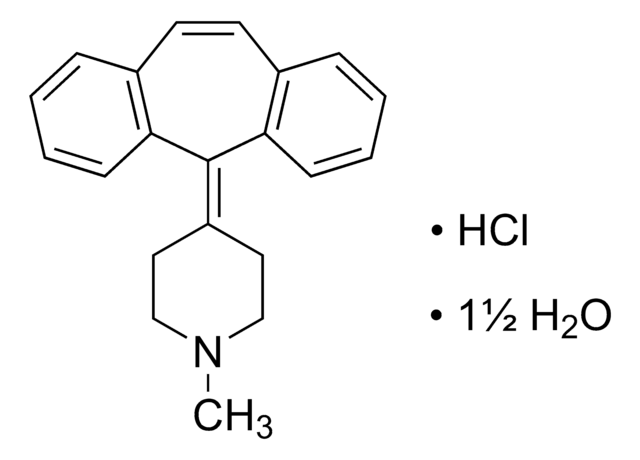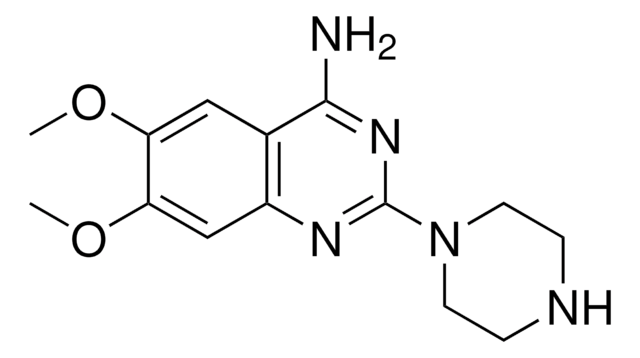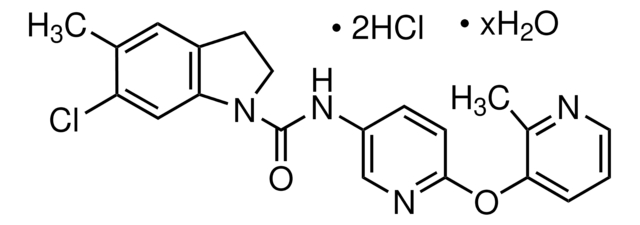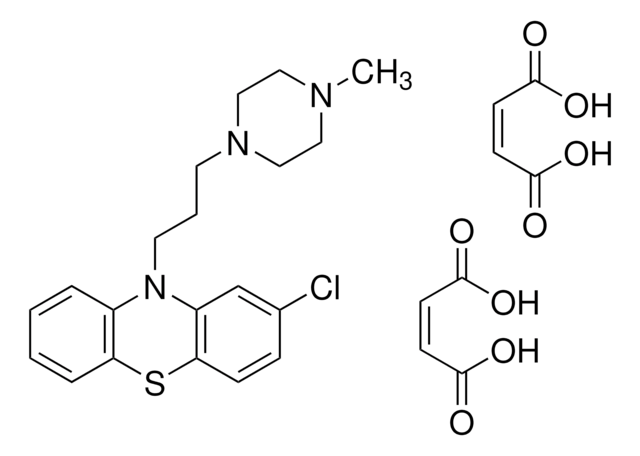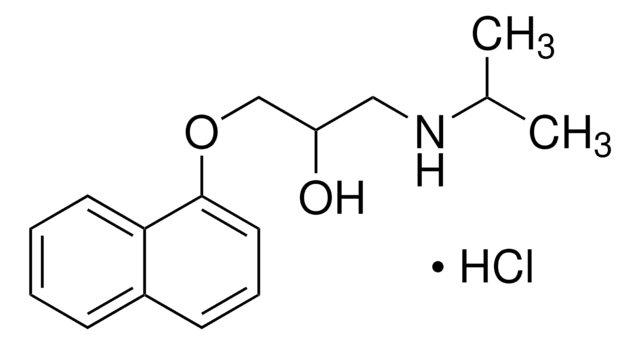C6022
Cyproheptadine hydrochloride sesquihydrate
≥98% (TLC), solid
Synonym(s):
Piperidine, 4-(5H-dibenzo[a,d]cyclohepten-5-ylidene)-1-methyl-, hydrochloride, hydrate (2:3)
About This Item
Recommended Products
Quality Level
Assay
≥98% (TLC)
form
solid
color
white to slightly yellow
solubility
ethanol: soluble
methanol: soluble
originator
Merck & Co., Inc., Kenilworth, NJ, U.S.
SMILES string
Cl.CN1CCC(\CC1)=C2/c3ccccc3C=Cc4ccccc24
InChI
1S/2C21H21N.2ClH.3H2O/c2*1-22-14-12-18(13-15-22)21-19-8-4-2-6-16(19)10-11-17-7-3-5-9-20(17)21;;;;;/h2*2-11H,12-15H2,1H3;2*1H;3*1H2
InChI key
ZEAUHIZSRUAMQG-UHFFFAOYSA-N
Gene Information
human ... HRH1(3269) , HTR2A(3356) , HTR2B(3357) , HTR2C(3358)
Looking for similar products? Visit Product Comparison Guide
Application
- testing anti-inflammatory activity in serotonin receptor (5-HT) induced inflammation
- the inhibition of 5-HT in in vivo and in vitro bioassays in crabs
- the inhibition of 5-HT in embryo physiological experiments
inhibition of calcitonin gene related peptide (CGRP)
Biochem/physiol Actions
Features and Benefits
Signal Word
Danger
Hazard Statements
Precautionary Statements
Hazard Classifications
Acute Tox. 3 Oral - Eye Irrit. 2 - Skin Irrit. 2 - STOT SE 3
Target Organs
Respiratory system
Storage Class Code
6.1C - Combustible acute toxic Cat.3 / toxic compounds or compounds which causing chronic effects
WGK
WGK 3
Personal Protective Equipment
Choose from one of the most recent versions:
Already Own This Product?
Find documentation for the products that you have recently purchased in the Document Library.
Our team of scientists has experience in all areas of research including Life Science, Material Science, Chemical Synthesis, Chromatography, Analytical and many others.
Contact Technical Service